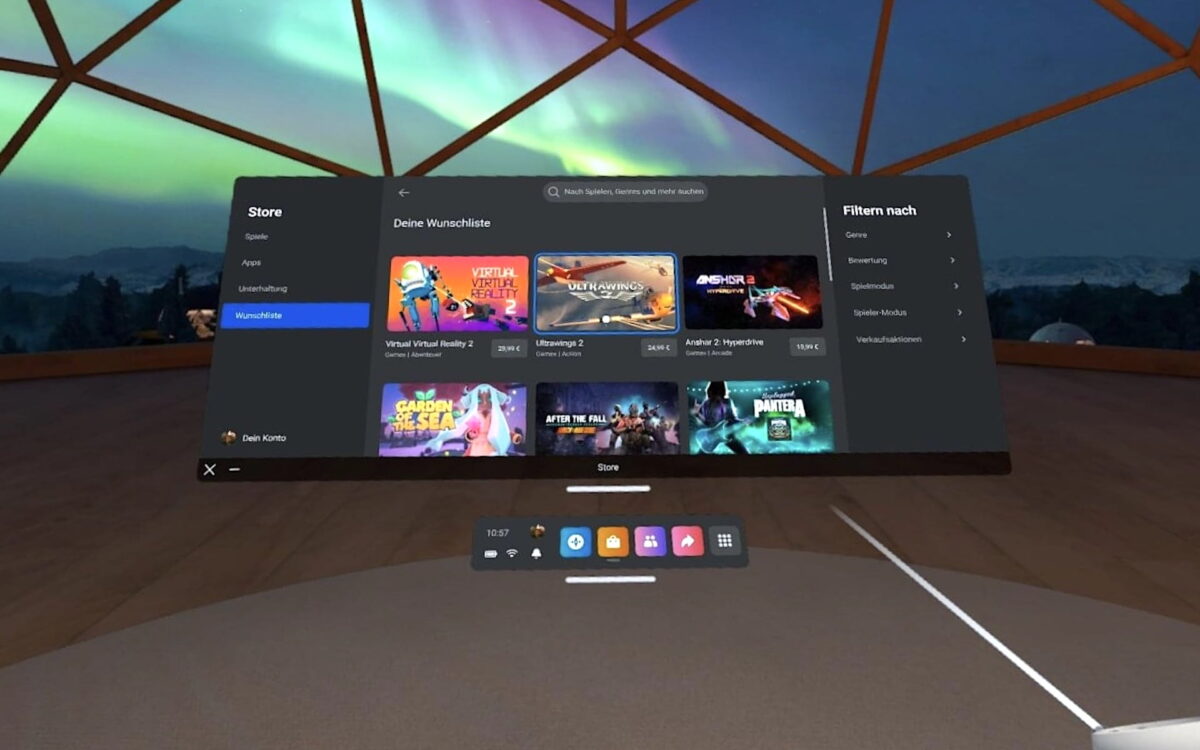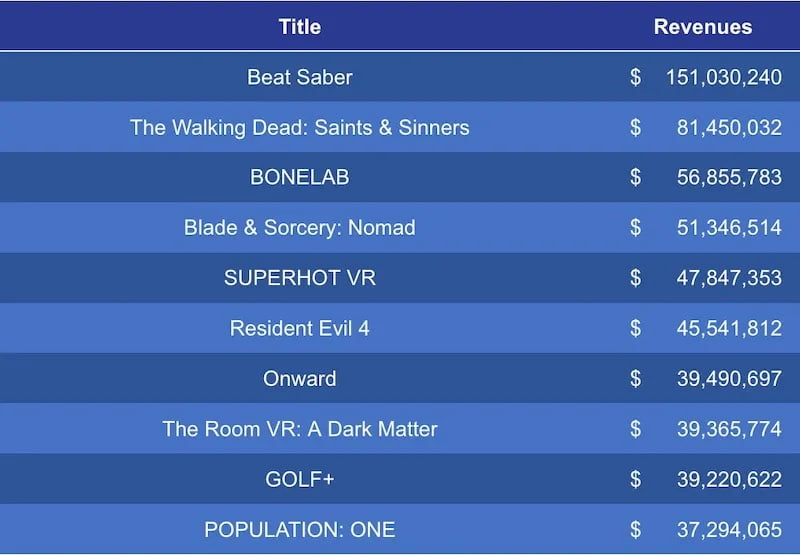Meta Quest Store: 5 Things You (Probably) Didn't Know

The Meta Quest Store is currently the largest VR ecosystem. An expert analysis led to some interesting findings.
The analysis was conducted by market researcher and XR expert Cassia Curran on behalf of The GameDiscoverCo newsletter. It was funded by FOV Ventures, a go-to fund in Europe that supports startups with a metaverse focus. Curran gave us permission to use her charts and infographics for this article.
Below, I summarize some findings and estimates. At the end of the article, you'll find links to the original sources if you want to dig deeper.
Content
1. The Quest Store is still small
The Meta Quest Store has launched in May 2019, and as of today, there are 441 VR apps, including 275 premium games, which account for nearly two-thirds of all VR apps. 25 games are free to play. The rest are paid and free apps, as well as applications aimed at businesses and professional users.
441 VR apps? That's not a lot compared to other app stores. A fact that can be attributed to two factors: that VR is still a niche and Meta's strict app curation. The largely uncurated Quest App Lab, which launched in February 2021, has more than 1,500 VR apps!

The distribution of app types in the Meta Quest Store. The vast majority are paid games | Image: Curran Games Agency / The GameDiscoverCo newsletter.
2. This is how much revenue the most successful Quest games make (estimate)
Curran estimates sales based on the number of star ratings in the Quest Store. Since some studios have published revenue or sales figures for their Quest games, it is possible to estimate how many buyers there are per star rating. This factor can then be applied to other VR games for a rough estimate of revenue.
This factor can vary greatly depending on the game. Niche titles with a dedicated community of players have a lower factor (75x) because many fans rate them, while casual titles like Among Us VR have a much higher factor (250x) because only a small number of buyers bother to rate a game.
Curran takes a factor of 110 as a rough median and comes up with the following top ten paid games by revenue. Revenue from DLC and in-app purchases are not included.

Top ten paid games in the Meta Quest Store by revenue. | Image: Curran Games Agency / The GameDiscoverCo newsletter
It's noticeable that most of the titles are older, perennial favorites. Only one newer VR game from 2022 made the top ten, and that's Bonelab. Other successful titles from 2022 that didn't make the top ten are
- Zenith: The Last City ($20 million).
- Saints & Sinners 2 ($10 million)
- Into The Radius ($8 million)
3. The 20 most popular game genres
Every VR game in the Meta Quest Store has genre tags. Based on the estimated sales and these tags, the 20 most popular genres were evaluated.
The analyst used median rather than average revenue, since titles like Beat Saber can heavily skew averages.

Fighting games, RPGs, and sports titles are particularly popular. | Image: Curran Games Agency / The GameDiscoverCo newsletter
4. Multiplayer beats single-player in revenue
Another evaluation showed that there are significantly more single-player than multiplayer apps in the Meta Quest Store (286 vs. 155), but that the latter generate 30 percent more revenue per title on average.
This is not surprising: according to Meta, more than half of Quest usage time is spent on social experiences and multiplayer games.
5. These are important success factors for Quest games
In an earlier store analysis from January 2022, Curran also evaluated which categories the best-selling Quest games fell into and came up with the following success factors:
- High-quality VR games that launched early in the Quest Store and consistently sell well (examples: Arizona Sunshine, Job Simulator).
- Clever use of a well-known IP (examples: The Walking Dead: Saints & Sinners, Star Wars: Vader Immortal).
- Excellent multiplayer experience (examples: Onward, Demeo)
- Realistic or semi-realistic sports and hobby games (examples: Eleven Table Tennis, Walkabout Mini Golf)
- High-quality and well-known PC VR games that have been successfully ported to Quest 2 (examples: Blade & Sorcery, Onward)
Note: Links to online stores in articles can be so-called affiliate links. If you buy through this link, MIXED receives a commission from the provider. For you the price does not change.